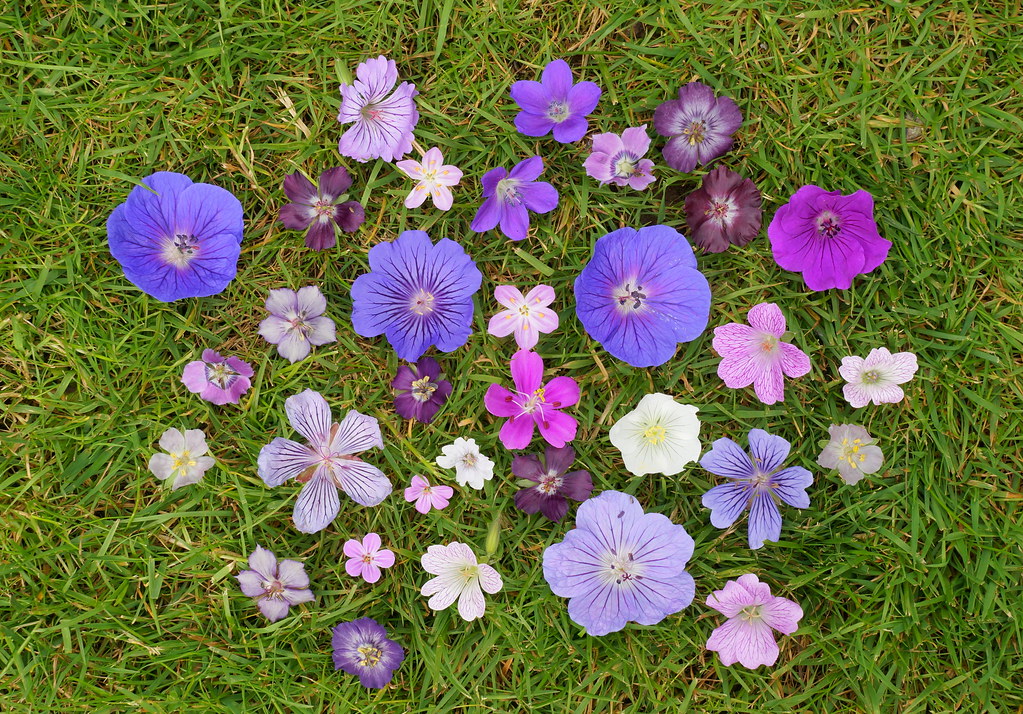#Geranium sylvaticum
Text

"Sorry, occupied"
Geranium sylvaticum (we call them Midsummer flowers in my language) with guests
#midsummer#art#drawing#traditional art#geranium sylvaticum#coloured pencils#promarkers#midsommar#midsommarblomster#dragon#bumblebee#fantasy art#fae art
2 notes
·
View notes
Photo

Hanna Resvoll-Holmsen - Skogstorkenebb, Geranium sylvaticum, 1911
1K notes
·
View notes
Text


G – Geranium sylvaticum L. – Geranio silvano (Geraniaceae)
(sotto, digital watercolor)
#photographers on tumblr#digital image processing#digital watercolor#original photographs#flowers#Geraniaceae
27 notes
·
View notes
Text
Karelian words - Medicinal plants
Rohtuheiny - herb, medicine
Rohtuheinät - medicinal plants
Ailasheiny - Geranium sylvaticum
Anistuheiny - Pimpinella anisum
Akanheiny - Hierochloë hirta esp. subsp. arctica and praetermissa
Ambujaiskukka, hevonboba - Knautia arvensis
Butkiheinä, ičenbutki - Angelica sylvestris
Čosnokku, valgolaukku - Allium sativum
Dorogaheiny - Plantago major
Horma - Chamerion angustifolium
Huuhky, suurikaza - Heracleum, esp. sibiricum and sphondylium
Heracleum sosnowskyi is widely spread in Republic of Karelia and is non-native species that is harmful for native flora.
Härkiheiny - Equisetum arvense
Kadai - Juniperus communis
Kadaimarju - cones of Juniperus communis
Kalaheiny - Mentha, esp. Mentha aquatica
Kirkiheiny - Drosera rotundifolia
Kulkkuheiny, čäijyheiny - Hypericum esp. maculatum and perforatum
Kumino, pikkukaza - Carum carvi
Naizienpaganaheiny - Drosera longifolia
Laukkuheiny - Allium schoenoprasum
Oravanheiny - Athyrium filix-femina
Porstutheiny - Geranium pratense
Suokannarvo - Rhododendron tomentosum
It's important to notice and understand that medicinal herbs and spices have large overlap and are referred with same general name. Karelians view food as medicine and medicine as food, which is reflected in this overlap.
DO NOT use this list as medicinal guide! Never consume plants or berries you do not recognize and know the use of.
Make sure that the plants you plan to pick are not protected vulnerable species and harvest even common plants only if you know appropriate ways to show respect and gratefulness.
8 notes
·
View notes
Text
Cold Late Spring
Since the last entry and the hopes that spring had finally arrived, once again here in Norfolk we are being plagued by a very cold onshore wind, drizzle and the need for a hat and gloves to walk the dogs.
However the preceding two weeks have brought great activity - the new shed, dog kennel arrangement has almost come to an end and the whole thing looks perfect. Once the oak and larch cladding turn to silver it will look as if it has been here forever. We just await the very last bits such as final electrics, the flooring and the worktops and shelves before Mr Horta can move himself back in with all the bee and fishing gear at present stacked up in the garage.
The garden despite the cold looks wonderful having had a good week last week with the tulips now putting on a good show. Half of me is grateful for the cool weather as it might hold them for another 12 days until the garden opening on 7 May - that would be wonderful. Irises are showing several buds, the Viburnums are poised and dear Maigold as ever is now just beginning to show a peak of her apricot colour - she is usually one of the showstoppers for a spring garden opening. Daffs are over so must be deadheaded, Cosmos seedlings now potted on look strong, the first courgettes are through as are the French Beans and asparagus is well on giving us our first pick on Saturday.
Having got the garden in tip top form I set off for Cornwall last week for a four day break with two good friends. We stayed in one of the Caerhays Estate cottages right on the beach at East Portholland which was lovely - a tiny little cove that joins with West Portholland at low tide. We were blessed with pretty good weather over all the UK last week and although never hot we did manage one late afternoon of sitting out with books! Caerhays garden itself and the castle is a most blissful setting - the National Collection of Magnolias and several Champion Magnolia trees - sadly not out due to the cold spring, but the rhodies, camellias, Pieris and smaller Magnolias that were out were beautiful. Gosh what those plant hunters brought back was nobody's business. A long morning at Heligan followed which was a wonderful experience - a bit more commercial than Caerhays and with 350,000 visitors a year understandable, but fact that it was only discovered in 1990 is extraordinary. Our last day was spent on a little tour - first to the village of Veryan famous for its 5 little round houses with thatched roofs and a cross on top. Apparently the vicar of the time built one for each daughter and they were round in order that the devil might not find a hiding place. They hold a special place in my heart as the last postcard I received from my mother was of those very round houses. Following a walk from east to west along Pendower Beach and a welcome coffee and sausage roll, Georgie and I walked the three hour walk back from Nare Head to Portholland west to east along the coast path going through Portlooe which was enchanting. Very very windy and the path is quite close to the edge but we made it - Common Blues, Wall Brown, Peacocks and Tortoiseshell butterflies, - pretty standard flowers but nonetheless very pretty primroses, bluebells, campions, pennywort, stitchwort - etc.
Home again to slightly better weather than expected so a big day in the garden on Saturday - planted out the things that had arrived in my absence thereby gap filling before the opening. Geranium Blue Cloud and sylvaticum Mayflower, Calamagrostis Avalanche, Polystichum for shady dry areas and still to do some small leaved Agapanthus Streamline which might be tougher for the pots where the larger leaved ones have perished this winter. Much had also arrived for the greenhouse where Jane aided by Simon and Mr Horta did a great job in unpacking rooted cuttings and potting them up for both my pots and a client. Quite a few bits and pieces for the plant stall and I still keep finding little bits - Saturdays swoop through with new planting yielded a nice bit of Sedum Jose Aubergine, Geranium renardii and Astrantia Ruby wedding.
The girls have been in very good and loving hands in my absence - Simon and Jane have walked them everyday - Inca has never done so much in a long time and need to recover! She has done a lot of sleeping since but was determined not to be left out. Bertha and Mavis have loved it and so after a quick refreshing training session on Saturday we set off yesterday for the Norfolk Gundog Club Novice Working Test at Sandringham. 35 competitors - I had both Bertha and Mavis. We expected cold drizzle and showers all day but Sandringham was like a micro climate - not only did we keep dry all day but we sat on the grass with a delicious hog roast at half time.
The girls went very very well - Bertha sadly did her beastly trick of putting the dummy down at one test which cost us a placing - the rest of her marks were consistently high so had she got the mark she could have at that point, I calculated 4th or 5th place. Pity but she ended with a really wonderful retrieve the memory of which I took home. Dear Mavis was her usual happy self - popping about over log and branch, not wanting to get into the rather cold lake but doing it, and just happy to be included and IMPORTANT. Next on the programme is an Open Charity Working Test next Sunday - maybe beyond Bertha's range but a great fundraising day so important to give it a go. My mentor is one of the judges so I shall hope for kindness!
The natural world is interesting as ever. Birds have taken up positions all over the garden - sadly the song thrush that was sitting tight in the clematis outside the sitting room window has deserted - eggs still there so clearly not predation. The always do seem rather nervous. Bluetits and greattits are in most of the boxes, Long Tailed Tits definitely somewhere in the garden and the usual blackbird, robin, dunnock, and wren brigade busy and established. We do get bothered by jays and a magpie but are trying to keep calm that this is balance. We are being visited by a swallow and sometimes two or three but as yet not in the garage and definitely not a pair. We hope that now the building team are gone and the garage quiet it wont be long but really until the weather settles a bit it is hard to see the situation changing. The common is becoming covered in Ladysmock and King Cups but still no frog or toad spawn anywhere.
Next up for the garden is a big blitz of the veg patch tomorrow and sowing some more salad - one lot is through but again slow. It needs a good weed and a lot of self sown Purslane needs taking out of both paths and beds.
Apple and Pear Blossom is at its peak so I am hopeful for the 7th May!
0 notes
Text
Fewer moths, more flies
https://sciencespies.com/nature/fewer-moths-more-flies/
Fewer moths, more flies
Their service is invaluable. The army of insects and other animals that pollinates the numerous plants of this earth has an essential function. Without these flower visitors, numerous wild plants could reproduce only poorly — or not at all. Ecosystems would thus no longer be able to function in their current form. More than three quarters of the most important crops depend on pollinators in order to be able to produce a high yield and good quality. A loss of pollinators would therefore also lead to economic losses amounting to billions.
It remains unclear whether the pollinators will still be able to provide their usual service. That’s because plants and their pollinators are intertwined in an elaborate network in which the distribution and abundance of the species involved as well as their seasonal occurrence, physiology, and behaviour are finely tuned. Even small changes could throw everything out of balance. Experts thus fear that human influences such as changes in climate and land use could lead to less effective pollination services.
However, because few studies have investigated the interaction between plants and different pollinator groups over longer periods of time, it is difficult to say whether and to what extent such developments are already under way. This makes the more than 120-year-old data from Finland on which the new study is based all the more exciting. Between 1895 and 1900, in the vicinity of Kittilä (a village that lies about 120 km north of the Arctic Circle), forester Frans Silén systematically recorded which insects visited which flowers and how often.
“I am passionate about working with historical datasets like this,” says Prof. Tiffany Knight from the UFZ. “If you repeat the historic studies again today, it’s often the only way to learn about long-term ecological processes.” For her, such work also challenges the imagination. “I am trying to understand what motivated the people who collected the data in the past and what challenges they faced,” she explains. “This information can then be used to plan a comparable modern study.”
The scientists thus first looked around Kittilä for sites where Silén had also made observations — and where the 17 plant species he studied best still grow today. At these sites, the team repeated the pollinator census in 2018 and 2019. The area remains sparsely populated, and little has changed in terms of land use. However, it has not escaped the consequences of climate change. “We have noticed drastic changes in the networks of pollinators,” says Leana Zoller from the MLU. Only 7% of the flower visits observed involved the same species of insects and plants as back then. “That is surprisingly little,” says Zoller.
For example, hoverflies and moths appear much less frequently on the flowers around the village today than they used to. This is probably not good news. That’s because these two groups have some particularly effective pollinators among them. These include the bumblebee hoverfly (Volucella bombylans) — a large, furry fly resembling a bumblebee. In Silén’s time, this species was the most frequent visitor to the Arctic raspberry (Rubus arcticus) and the woodland geranium (Geranium sylvaticum). The bumblebee hoverfly was likely able to effectively transfer the pollen of these species from one plant to the next.
Also moths use a physical advantage during pollination: with their long proboscis, they can also reach the nectar from the base of tubular flowers. This is why they used to be the most frequent visitors of the fringed pink (Dianthus superbus) and bladder campion (Silene vulgaris), both of which have such flowers.
Whilst these insects have become rarer, the flowers around Kittilä are now getting considerably more visits from bumblebees and certain flies. Whether these animals work as effectively as the earlier pollinators is not yet known. However, one trend in particular concerns the researchers. There are now considerably fewer insects that are specialists for certain flower shapes. These have been replaced by flies of the genus Thricops, which visit many different plants. Such generalists are often more robust when it comes to environmental changes; if one of their host plants is lacking, they can easily switch to others. But they also carry the pollen of various other plant species onto a flower, thereby potentially providing a less effective pollination service than the specialists.
“So far, the pollinator network in our study area still seems to be working well,” says Zoller. “There is no evidence so far that the plants are getting too little pollen and are thus less capable of reproducing.” But according to the scientists, this can change in the future if changes in the insect communities continues. So far, the flies there seem to be coping with the rising temperatures. But further north in the high Arctic, one study has revealed a massive decrease in the number of flies. “If this also happens in our study area, it could become a problem,” says Zoller. Because at some point, the plants will no longer be able to compensate for the losses in their pollinator network.
#Nature
0 notes
Text

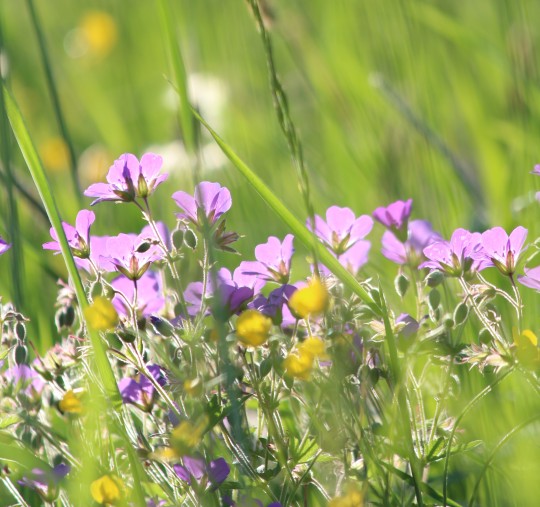

visiting home
#summer#vacation#summer vacation#flowers#floral#summer flowers#summer floral#swedish#swedish summer#grass#green#purple flowers#geranium sylvaticum#wood crane's-bill#purple#violet#yellow#buttercups#sunlight#sunny#backlight#photography#photographers on tumblr#canon eos 100d#flower buds#budding#beauty#nature#nature's beauty#beautiful nature
42 notes
·
View notes
Photo
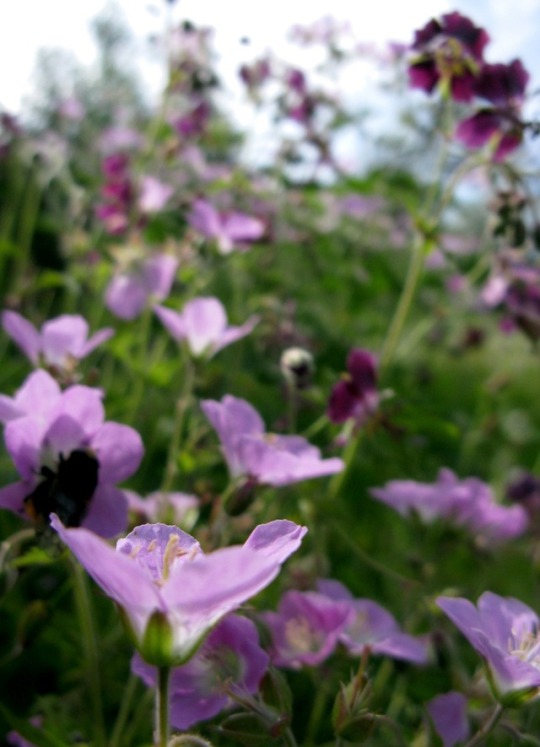
A most peaceful weekend to everyone!
#poetic#poets on tumblr#photographers on tumblr#garden#plants#Geranium sylvaticum#Geranium phaeum#weekend wishes
242 notes
·
View notes
Text
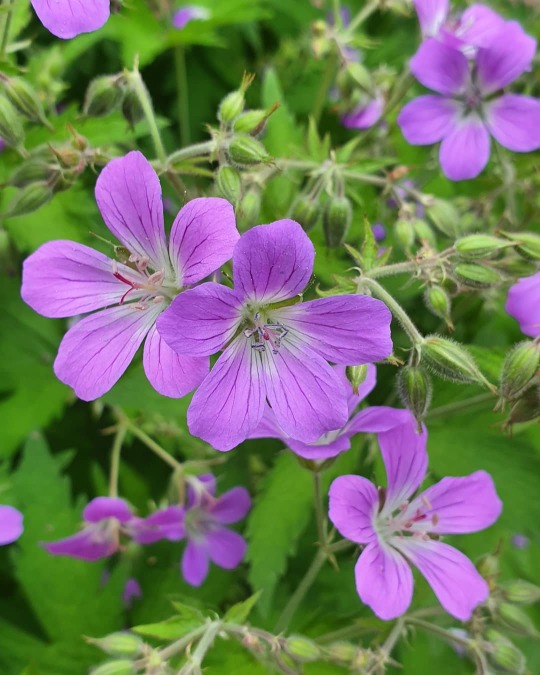
Wild Wood Cranesbill flowering in my garden💜.
3 notes
·
View notes
Photo


Kiss under Belletayn’s spell
Another art for my fic: Burning for You. Got inspired while writing chapter 2. I hope I’ll get it finished soon.
https://archiveofourown.org/works/36338332
#gerlion#geraskier#the witcher#geralt of rivia#jaskier#dandelion#geralt x dandelion#geralt x jaskier#flower crown#belletayn#fan art#my art#the witcher fanart#the witcher fanfiction#fanart: the witcher#in case anyone's interested Jaskier's flower crown has dandelions and buttercups#Geralt's has Geranium sylvaticum Forget-me-nots Lilies of the valley and arctic starflowers
118 notes
·
View notes
Video
Cranesbill's .. by Christopher
Via Flickr:
#Plantae#Geraniaceae#Geranium#Geranium himalayense#Gravetye#Geranium phaeum#phaeum#dusky cranesbill#mourning widow#Geranium nodosum#nodosum#knotted cranesbill#Geranium sylvaticum#sylvaticum#wood cranesbill#Geranium x monacense#geranium monacense#eric clement#monacense#Geranium reflexum#reflexum#Geranium Tiny Monster#Tiny Monster#Geranium phaeum var lividum#lividum#Geranium Sabani Blue#Sabani Blue#Geranium yeoi#yeoi#Geranium x oxonianum
4 notes
·
View notes
Photo
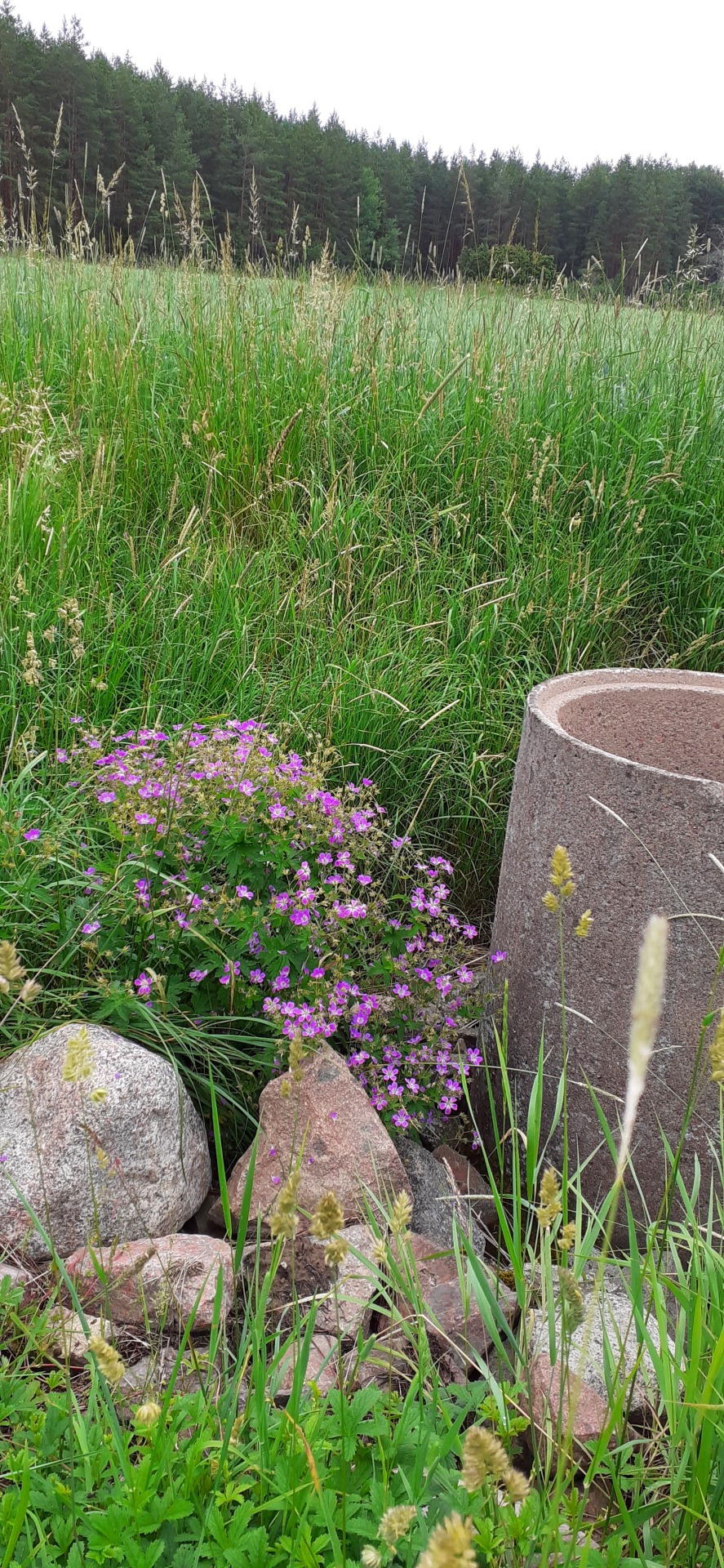


happy midsummer! photos are the purple so-called “midsummer flower” (geranium sylvaticum) that bloom here in this season! theres been a ton of them in my area this year, the huge cluster in top left i photographed today, on midsummer’s eve. still feeling sick but slept a little bit last night so a long nature walk today seemed good.
5 notes
·
View notes
Photo

Flowering Wood cranesbill, Geranium sylvaticum, metsäkurjenpolvi kukkii.
#wood cranesbill#Geranium#sylvaticum#metsäkurjenpolvi#woodland geranium#cranesbill#kurjenpolvi#flowering#kukkiva#perennial#kukkakasvi#sininen#blue#flower#kukka
24 notes
·
View notes
Photo

Wood Cranesbill (Geranium sylvaticum)
4 notes
·
View notes


